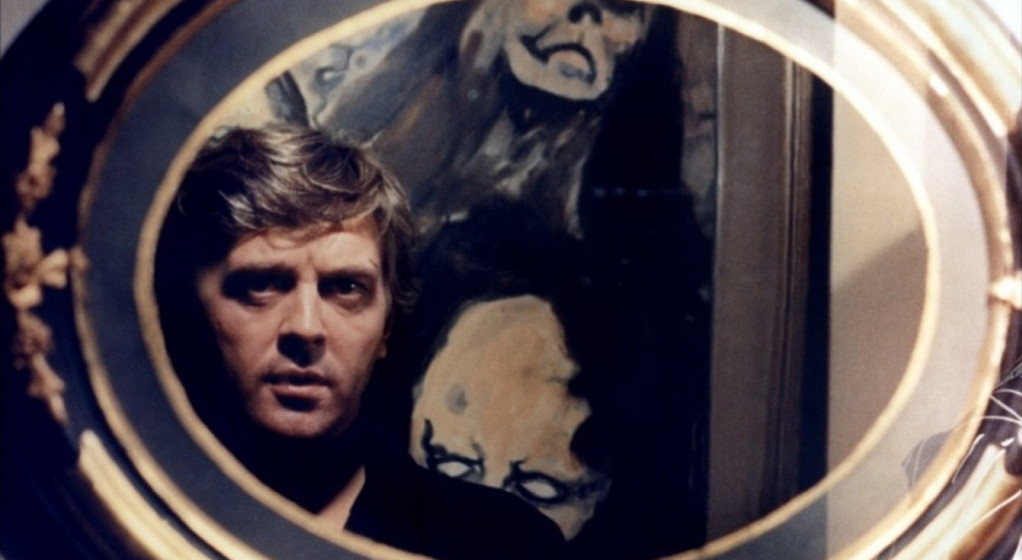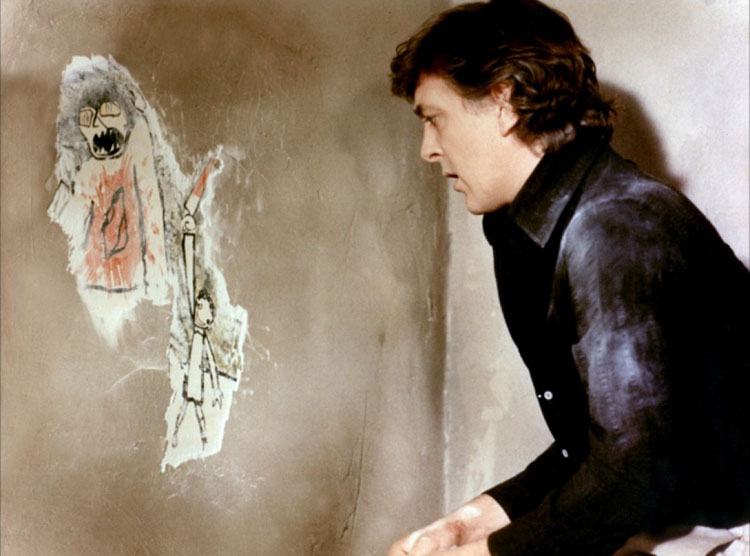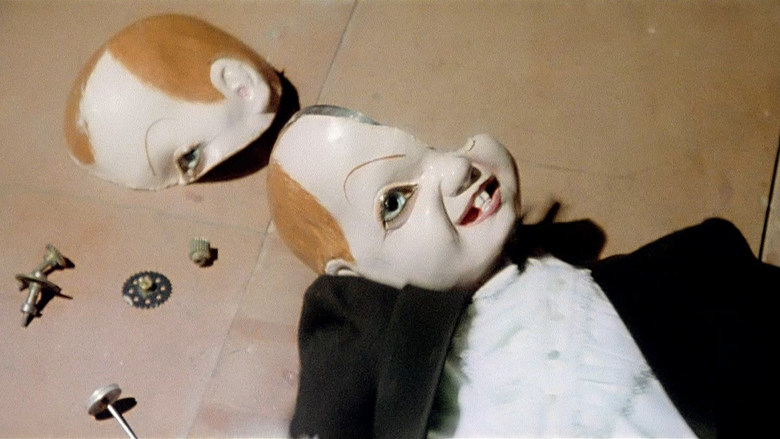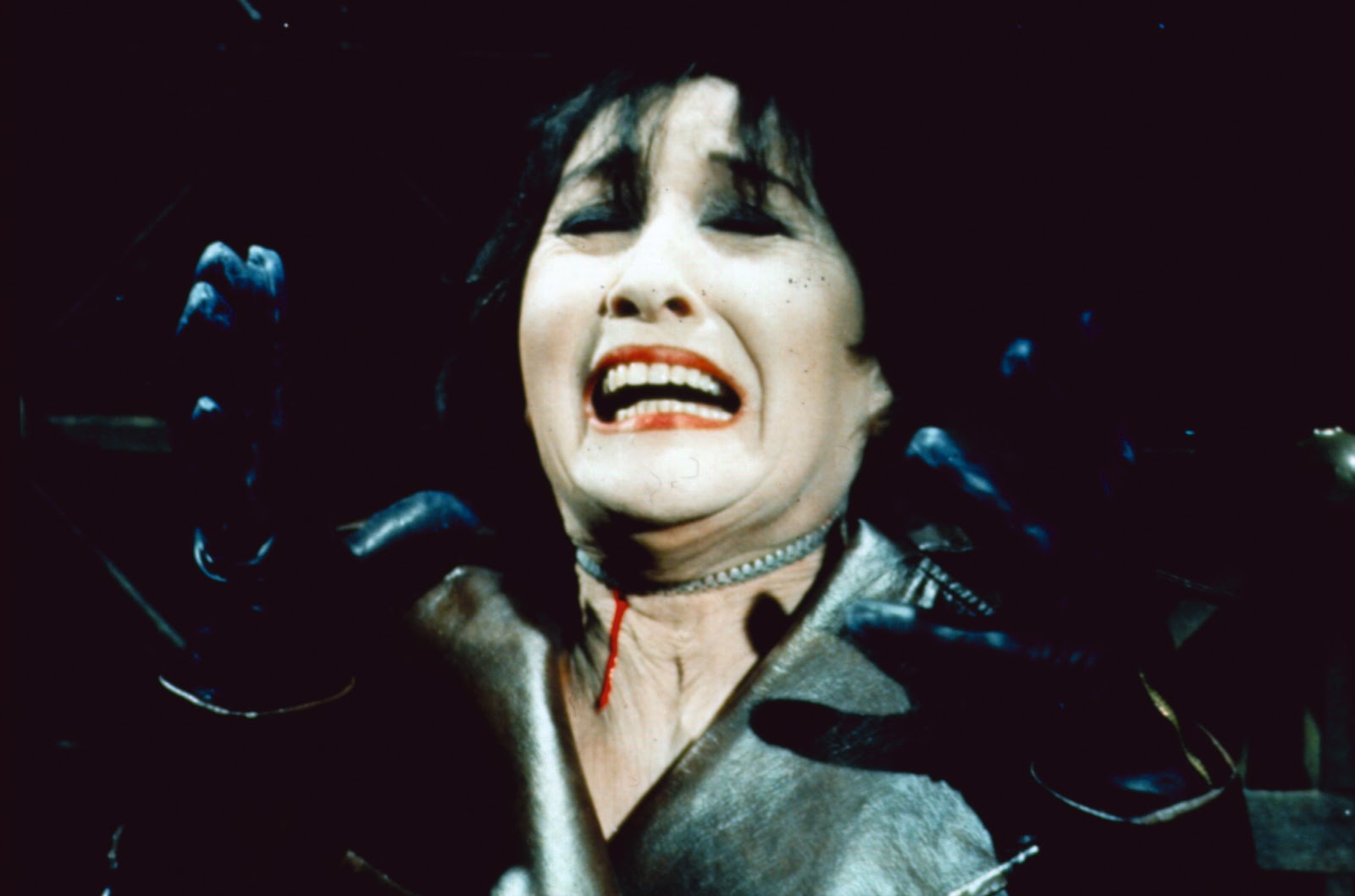
“In my book, Argento and Hitchcock master the threat of architecture and urban landscape like none other.”
– Guillermo del Toro
There will be blood
The 1975 nightmare from giallo progenitor Dario Argento, Deep Red (Profondo Rosso in Italian, also released as The Hatchet Murders) is a high water mark for horror as well as being one of the most influential slasher films of all time.
Combining elegant visual tableaus, optical shell games, a dash of the supernatural, and the artfully abject tale of an axe murderer into a grand whodunit, Argento’s ever-roaming camera and arthouse instincts do him a great service in this hyper-stylish paean to pain, sin, and redemption.
“Deep Red was Dario Argento’s first full-fledged masterpiece, a riveting thriller whose secrets carefully unravel via a series of carefully calibrated compositions that become not unlike virtual gateways into Freudian pasts.”
– Ed Gonzalez, Slant Magazine
Painting the town red

The fifth film from Argento, Deep Red s with the Italian traditions of self-conscious detective fiction under the handle of giallo. These giallo films––the name of which refers to the yellow dust jackets that were popular on detective novels at the time––became completely identifiable with a string of male-centric movies focussing on men in amateur detective mode, often forced to work outside the law in order to clear their own name.
These pictures were not only obsessed by the male gaze, they were also pure exploitation, subversively stuck on psychoanalytical themes of repression, perversion, and often rather primal libido and terror.
Truth be told the giallo cycle had reached something of a plateau by 1975––Argento first reached international success with his debut giallo in 1970, The Bird with the Crystal Plumage––and many thought the genre had exhausted its audience by the time Deep Red was released. Argento, not yet thought of as a strictly horror director, had made the smart decision to sew in threads of the supernatural and the macabre, spooky ingredients absent from the song and dance of previous detective conventions.
Shortly after American pianist Marcus Daly (David Hemmings) lives in Rome and witnesses the brutal and gruesome murder of a famed psychic medium, Helga Ulmann (Macha Méril), he becomes both haunted and obsessed with the murderer’s identity. In cahoots with Marcus is an investigative reporter Gianna Brezzi played by Daria Nicolodi, in the first of five films that she’d make with Argento––the others being Inferno (1980), Tenebrae (1982), Phenomena (1985), and Opera (1987)––as well, the two would have a daughter together, Asia Argento, in 1975.
Gianna proves her worth to Marcus on numerous occasions, including saving him from a burning house, with the hopes of landing a big scoop cracking the now notorious and ongoing “hatchet murders” case. And the deeper the pair go, the more dangerous and deadly things get.
Also helping Marcus out, while coloring himself as a potential suspect is the pained and provoked fellow pianist, Carlo (Gabriele Lavia). Adding extra color to this mostly conventional stoolie is his mother Marta, an aging actress with incestuous secrets played with verve by the celebrated Clara Calamai––herself something of an Italian icon whose considerable career peaked in the 1930s and 1940s.
“Cinema is essentially Freudian; occurring between the dark and dreams, between reality and what we can no longer recall. For me, cinema, even more than real-life, is pure Freud.”
– Dario Argento
Cinema in the blood

Deep Red proved to be immensely popular in Italy, where it would mother a brood of imitators, but by and large the English-speaking critics panned the film as Euro-schlock with an abundance of exploitation platitudes. The perverse posturing, hyper-stylized violence, gory set pieces, and roughly-hewn narrative wasn’t immediately gleaned by many American audiences.
It could be that Argento, obsessing on arthouse execution and tactics, didn’t find an English-language audience at first owing to this unusual and tenebrous approach, rarely combined at that point, with gory, blood-flecked genre delights from the likes of Lucio Fulci. And while many giallo directors had embraced elements of gothic horror à la Mario Bava, with Deep Red, Argento was more into pastiching material from Michelangelo Antonioni.
Even the inspired casting of Hemmings in the title role echoes Antonioni’s international sensation from 1966, Blow-Up. In that film Hemmings is also cast in the lead, as a man on the periphery of a murder mystery who suddenly finds himself implicated in it all, owing to his own unhealthy and unnecessary fascinations and tiger-by-the-tail intrusiveness.
And in both films there are numerous instances where Hemmings’ character fails to recognize and resolve the identity of the offender as the mystery swallows him whole.
Deep Red gushes with the transgressive libidinal themes that Argento had explored in his earlier giallos, but here more than in any of his previous projects do we see his sly advance as a cinematic formalist. Ambiguous and exciting point-of-view camerawork, eruptions of blood and splatter punctuated by long takes, and impressively pronounced divisions in sound and image help make the film brazenly stand at attention.
The brilliant production design from Giuseppe Bassan, commanding what’s got to be an architect’s worst nightmare, and the assured lensing of cinematographer Luigi Kuveiller both added immeasurably to Deep Red’s eventual cult status and influence.
“Deep Red helped make Argento’s international reputation, even attracting the attention of Alfred Hitchcock, whose influence can be felt in nearly every scene… Operating under the principle that a moving camera is always better than a static one, and not above throwing in a terrifying evil doll, [Deep Red] showcases the technical bravado and loopy shock tactics that made Argento famous.”
– Keith Phipps, AV Club
You did this to me

Deep Red is also noteworthy for marking Argento’s very first collaboration with Italian prog-rock renegades Goblin. Their hauntings score came about quickly due to time constraints but this haste in no way weakens the overwhelming and senses-shattering buildup of suspense that their soundtrack became famous for.
Goblin would re-team with Argento for such masterworks as Suspiria (1977), Tenebre (1982), Phenomena (1985), and more, not to mention their pairing with both Argento and George Romero on 1978’s Dawn of the Dead.
And it wasn’t just fright fans who were tantalized and teased by Goblin’s all-consuming and mercurial musical thunderstorm. Their OST, and particularly the theme “Profondo Rosso” would inspire future generations of genre directors, most notably John Carpenter, who has repeatedly specified that both the score and the film were a major influence on his horror classic Halloween (1978). “I am a huge Goblin fan,” Carpenter told Billboard in a 2015 interview, “and any time I can sound remotely like Goblin, I’m very happy.”
“Deep Red was a huge influence on John Carpenter and he directed Halloween three years later as an homage to this movie,” writes Argento’s biographer James Gracey in his 2010 book “Dario Argento”, adding: “Argento’s use of widescreen persistently suggests that someone or something could be lurking in the corner of the screen, forever ready to pounce. This was echoed by Carpenter, who also borrowed the idea of a woman alone in her house with a killer moving into frame behind her subsequent attempts to defend herself with a knitting needle…”
Death by design

Deep Red makes for an excellent introduction to Dario Argento’s unfolding and expanding style of horror, and it brilliantly boasts his interlaced allure to both beauty and abomination. Argento’s garish cinematic style––equal parts gruesome and gorgeous––is uncompromising and upsetting, with OTT gore, dazzling imagery, eerie nostalgia, and an almost endless parade of shocks and suspense.
Deep Red is worth visiting for its lurid colors, and off-kilter narrative alone, the technical prowess and Goblin’s mindfuck musical score––a grizzly symphony of Krautrock brilliance––is just gravy. High-style horror and the relentless male gaze, particularly when reflected in a bright mirror-like crimson puddle of blood, in an id-driven narrative nightmare of memories, mistakes, Christmases, and murder. Deep Red is an unbending and electrifying thriller.
Author Bio: Shane Scott-Travis is a film critic, screenwriter, comic book author/illustrator and cineaste. Currently residing in Vancouver, Canada, Shane can often be found at the cinema, the dog park, or off in a corner someplace, paraphrasing Groucho Marx. Follow Shane on Twitter @ShaneScottravis.